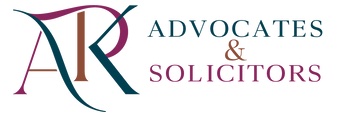In the previous article, we covered the key recommendations of the RBI’s recent guidelines on asset reconstruction companies in India from a capital requirement and insolvency perspective.
RBI in an attempt to revamp the ARC framework and bring in more transparency and efficient corporate governance standards has introduced the following measures.
- Terms of Appointment of Key Management of ARC
(i) Chair of the Board of Directors: An independent director shall be the chair of the board. In case, if the chair is not present, meetings of the board shall be chaired by another independent director. The quorum for the board meetings shall consist of one-third of the total strength of the board or three directors, whichever is higher. It also requires that at least half of the directors attending such board meetings shall be independent directors.
AKP Comments: Presently, ARCs in India are either closely held or with a concentrated holding of financial institutions, who are also the sellers of distressed assets and in many cases, sponsors for the purchase of stressed assets. There is a need for reducing conflict of interest in the operations of ARC owing to which this measure has been brought in.
(ii) Tenure: The tenure of the Managing Director (MD), Chief Executive Officer (CEO) and Whole Time Directors (WTDs) shall not be more than five years at a time. Such MD, CEO or WTD shall be eligible for reappointment, however, such MD, CEO or WTD shall not hold the same office for more than fifteen years, continuously.
Further, after maintaining a gap of three years, such an individual shall be eligible for reappointment as MD/ CEO or WTD in the same ARC, if the board considers it necessary and desirable. However, in the mentioned three years gap i.e., the cooling period, such a person shall not be appointed or associated with any ARC in any capacity either directly or indirectly. ARCs to ensure successful planning through appropriate measures.
(iii) Age of the MD/ CEO or WTD: A person continuing as the MD/ CEO or WTD shall be less than 70 years of age. ARCs are further allowed to lower the age of retirement as part of their internal policy.
(iv) Performance review: The Board shall review the performance of the MD/ CEO and WTD on an annual basis.
(v) ‘Fit & Proper’ criteria: In accordance with the SARFAESI Act, prior approval from RBI is required for the appointment/re-appointment of a director, MD or CEO. ARCs are to conduct due diligence to check the ‘fit and proper’ criteria and determine the suitability of the person for the said designation based on the past track record and integrity.
AKP Comments: RBI is pushing ARCs to ensure appointments at key managerial positions are made on an arm’s length basis from a pool of banking and management professionals who are given goals, and clear targets and who shall allow ARCs to develop a planned roadmap for their businesses.
2. Committees of the Board
| Audit Committee | Nomination and Remuneration Committee |
| to consist only of non-executive directors.the chair of the Board shall not be a member of the audit committee.audit committee to meet at least once a quarter with a quorum of three members at least.audit committee meetings are to be chaired by an independent director who shall not chair any other committee of the board. all members of the committee are to hold an understanding of financial statements and attached notes with one member possessing professional expertise in financial accounting or management.the audit committee to hold powers, functions and duties as provided under Section 117 of the Companies Act, 2013.conduct periodic reviews and assess internal control systems w.r.t asset acquisition procedures followed by the ARC. ensure accounting of the management fee/ incentives/ expenses is in compliance with the applicable regulations. | ARC shall establish the nomination and remuneration committee of the board, possessing the same power, functions and duties provided under Section 178 of the Companie Act, 2013. The committee to ensure the ‘fit & proper’ status of directors and sponsors, both existing and proposed. |
3. Enhanced Disclosures from Qualified Buyers:
To ensure investments from a broad spectrum of Qualified Buyers (QBs) and healthy competition among the ARCs, the following disclosures are to be made in the offer document:
- Summary of financial information of the ARC for the last 5 years or since the commencement of business of the ARC, whichever is shorter.
- Track record of returns generated for all Security Receipt (SR) investors on the schemes floated in the last 8 years.
- Track record of recovery rating migration and engagement with rating agency of schemes floated in the last 8 years.
4. Credit Rating Agencies (CRA)
- ARCs shall mandatorily obtain recovery ratings of the SRs from CRAs and disclose the assumptions and rationale behind such ratings to SR holders.
- ARCs shall retain a CRA for at least 6 rating cycles (of half a year each). If a CRA is changed mid-way through these 6 rating cycles, the ARC shall disclose the reason for such change.
5. Independent Evaluation of Settlement of Dues
The guidelines for the reconstruction of financial assets through the settlement of dues payable by the borrowers have been modified. It now states that the settlement of dues with the borrower shall be done only after the proposal is examined by an Independent Advisory Committee (IAC). IAC shall consist of professionals having technical/ finance/ legal backgrounds. IAC, after assessing the financial position of the borrower, the time frame available for recovery of the dues from the borrower, projected earnings & cash flows of the borrower and other relevant aspects, shall give its recommendations to the ARC regarding the settlement of dues with the borrower.
The settlement with the borrower should be done only after all possible steps to recover the dues have been taken and there are no further prospects of recovering the debt.
6. Deployment of Surplus funds
In order to allow ARCs to manage their surplus funds efficiently, they are now permitted to deploy the available surplus funds in short-term instruments such as money market mutual funds, certificates of deposit and corporate bonds/ commercial papers, subject to the following conditions:
(i) Maximum investment in such instruments is capped at 10% of the NOF of the ARC.
(ii) The ARC shall have a Board-approved policy in this regard.
7. ARC Investment in Security Receipts
ARCs are now permitted to invest in SRs by transferring funds. Such investment has to be made at a minimum of either 15% of the transferors’ investment in the SRs or 2.5% of the total SRs issued, whichever is higher, of each class of SRs issued by them under each scheme on an ongoing basis till the redemption of all the SRs issued under such scheme.
8. Eligible to Purchase Stressed Loans
Stressed loans which are in default with the transferors are permitted to be transferred to ARCs. Further, the Master Direction – Reserve Bank of India (Transfer of Loan Exposures) Directions, 2021, is being suitably updated.

[Click here to check the RBI Notifications ]






